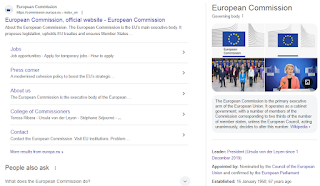The Destruction Of Ukraine's Nuclear Arsenal
January 09, 2019 18:00 CET
By Kateryna Oliynyk
Twenty-five years ago, Ukraine possessed the world’s third-largest nuclear arsenal. It had inherited 175 long-range missiles and more than 1,800 warheads after the collapse of the Soviet Union. Following two years of talks been the United States, Russia, and Ukraine, U.S. President Bill Clinton announced a breakthrough on January 10, 1994. Ukraine had agreed to remove all nuclear weapons from its soil in exchange for assurances that Russia would respect its sovereignty.

1Soldiers lay a nuclear warhead in a container on January 4, 1992. Most tactical nuclear weapons were transferred from Ukraine to Russia.

2Flames erupt from a blast that demolishes a decommissioned SS-24 nuclear missile at a military base in the southern Ukrainian town of Pervomaysk on September 29, 1998.

3A Ukrainian Army officer inspects a destroyed SS-24 missile silo near the town of Pervomaysk in Ukraine's Mykolayiv region. By the end of 2001, Ukraine had destroyed all of 46 of its intercontinental ballistic missile silos.

4U.S. President Bill Clinton announced a breakthrough in talks between the United States, Russia, and Ukraine at a press conference in Brussels on January 10, 1994. He said Ukraine had agreed to remove all nuclear weapon from its soil, eliminating the world's third-largest nuclear arsenal.

5Russian President Boris Yeltsin (left), U.S. President Bill Clinton (center), Ukrainian President Leonid Kuchma, and British Prime Minister John Major (right), sign the Nuclear Nonproliferation Treaty in Budapest, Hungary, on December 5, 1994. Known as the Budapest Memorandum, the agreement officially dismantled Ukraine's nuclear arsenal.

6Police officers remove a protester from a rally in Kyiv on January 12, 1996. He was attending a demonstration organized by several members of Ukraine's parliament who were opposed to the denuclearization deal. As the protester is being thrown into a police van, he clings to a sign demanding the resignation of former Ukrainian Defense Minister Valeriy Shmarov.

7An Ukrainian officer watches a SS-24 nuclear missile booster being removed from its bunker at a military base in southern Ukrainian town of Pervomaysk on September 29, 1998.

8A worker prepares to dismantle a SS-19 missile at a special decommissioning station in Dnipropetrovsk, Ukraine on July 26, 1996. The station was built with financial aid from the United States.

9Soldiers practice transferring a nuclear warhead from a rail car onto a truck near the Ukrainian city of Kirovohrad on December 7, 1995. It was part of an exercise to train specialized personnel to cope with potential accidents during the transport of nuclear materials.

10U.S. Senators Sam Nunn and Richard Lugar turn two tiny keys to initiate the destruction of a former Soviet nuclear missile silo in the formerly top-secret Khmelnitsky military base in central Ukraine on October 23, 1996. The keys once held the power to launch SS-19 missiles at the United States.

11Smoke billows from an explosion that destroyed a missile silo at a military base near Pervomaysk, Ukraine on January 5, 1996.

12Journalists and military officials from Ukraine, Russia, and the United States inspect a massive crater from a destroyed nuclear missile silo at a military base in Pervomaysk in 1996. Ukraine transferred its last 40 nuclear warheads to Russia that June and officially lost its status as a nuclear power.

13A Ukrainian officer smokes and shakes sand out of his boot before preparing to blow up a missile silo near the town of Derazhnya in central Ukraine, October 23, 1996.

14Fuel is pumped out of a Soviet-era SS-19 nuclear missile carrier at a military base in Krasilovo, Ukraine, on May 14, 1997.

15Ukrainian workers cut an air-to-ground X-22 cruise missile into pieces at a military base in the village of Ozerne, on November 6, 2002.

16The last SS-24 missile silo being blown up near the Ukrainian town of Pervomaysk on October 30, 2001. In all, 46 SS-24 intercontinental ballistic missile silos were destroyed.

17Ukrainian specialists dismantle the last strategic Tupolev Tu-22M3 Backfire nuclear bomber at an airbase outside the Ukrainian city of Poltava on January 27, 2006. After the collapse of the Soviet Union, Ukraine had inherited 60 Tu-22 bombers and 423 X-22 cruise missiles.

Kateryna Oliynyk
Kateryna Oliynyk is a digital-media coordinator for RFE/RL.

a) TOP STATE GANGSTER CRIMINAL LOCATED IN WESTERN WORLD IS TITLED AS ______
b) A SO CALLED CONSTITUTIONAL MONARCHY IS _______
c) THE MURDEROUS INSTRUMENT USED TO MURDER/PLUNDER AS PLEASED THROUGH BIGGEST DEMOCRACY IN THE WORLD KNOWN AS UNITED STATES OF AMERICA IS KNOWN AS ______
d) Bible is to God as MK Ultra is to ________
e) MK Ultra is a play straight out of _________
ANSWERS:
a) KING/QUEEN
b) Piracy, slavery, theft, robbery, plunder, murder, saw nothing heard nothing know nothing murder from behind a lot, corruption, judicial/judiciary psychiatric violence,
c) PRESIDENTIAL IMMUNITY
d) SATAN/SATANISM
e) Satan's book
what do British have British royals for....British plundered/murdered/enslaved/starved/ crippled throughout Asia/Africa South America North America in crown's name for the benefit of all since world learn about Britain. UK is a huge pirate ship - lawless barbaric island where anything goes for as long as is in national interest is what for.... THEY AREN'T ANY BETTER THAN DURING SLAVERY TIMES - its just that news travels a bit faster and they no longer are alone on the planet with few other colonial powers. Humanity somewhat caught up step with them....other than that same tricks same shit - this is what royals are for....to point fingers at them instead of what should have been a human conscious/laws/ constitution
GET TO READ HER ARICLE BECAUSE THERE IS SOMETHING VERY VERY BAD HAPENING SOMEWHERE WITH SOMEONE - DOES SO TO DEMONSTRATE WORLD THAT SHE, HOWEVER, IS DOING HER JOB AND NOT DELIBERATELY FAILING ONE....CORRUPTION = 100% GOVERNMENT JOB WHEATHER THROUGH PRIVATE OR PUBLIC SECTORS MAIN CORRUPTION IS AT THE AGENCIES WHERE COMPLAINS ARE SUBMITTED TO AND NEVER RESOLVED AT SATISFACTION OF VICTIMS OF CRIME. RIGHT AT THE TOP AND IT DOESN'T GET ANY HIGHER THAN EUROPEAN COMMISSION
Anti-corruption
Corruption, commonly referred to as the abuse of entrusted power for private gain, is a multi-sector phenomenon, present both in the public and private sector, and in the political arena. While corruption can take the form of petty crime or complex high-level corruption, it can also hide behind favouritism and nepotism, conflicts of interest and revolving doors – where business meets politics.

I would like to focus on corruption, with all its faces. The face of foreign agents trying to influence our political system. The face of shady companies or foundations abusing public money. We must also eradicate corruption at home. That is why we will present measures to update our legislative framework for fighting corruption. It erodes trust in our institutions. So, we must fight back with the full force of the law.
Corruption is harmful to society. It constitutes a threat to security as it enables and drives organised crime, terrorism, and other forms of crimes, including money-laundering or drug trafficking. Corruption deepens inequalities, erodes citizens’ trust in public institutions, undermines good governance and social justice, and constitutes a serious threat to the rule of law, democracy, and fundamental rights. Corruption also has a negative impact on prosperity and economic growth by creating business uncertainty, lowering investment levels, hampering fair competition and reducing public finances. It also adversely affects government objectives that focus on
improving income disparity and environmental protection.
The European Union is one of the least corrupt regions in the world. However, none of the EU countries is fully free from corruption. Although its nature and scope may differ from one EU country to another, corruption harms the EU as a whole:
- Corruption is estimated to cost the European Union between EUR 179 billion and EUR 990 billion per year, amounting to up to 6% of its GDP.
- 70% of Europeans believe that corruption is widespread in their countries - an increase of 2 points compared to 2022 (2023 Corruption Eurobarometer Survey).
- 35% of EU businesses consider corruption to be a problem in doing business, (2023 Eurobarometer survey: Business’ attitudes towards corruption).
- 59% of EU business agree with the statement that bribery and the use of connections is often the easiest way to obtain certain public services, (2023 Eurobarometer survey: Business’ attitudes towards corruption).
On 3 May 2023, the Commission adopted anti-corruption package. This includes a proposal for a new Directive on combating corruption by criminal law. It aims to update and harmonise EU rules on definitions and penalties for corruption offences to ensure high standards against the full range of corruption crimes. It provides also for corruption prevention. Prevention helps to support a
culture of integrity, in which corruption and impunity are not tolerated.
The set of measures include new and strengthened rules criminalising corruption offences and harmonising penalties across the EU, as well as a dedicated Common Foreign and Security Policy (CFSP) sanctions regime to target serious acts of corruption worldwide. These new measures place a strong focus on prevention and creating a culture of integrity, in which corruption is not tolerated and at the same time, strengthen enforcement tools.
The Package includes a Joint Communication on the fight against Corruption, through which the Commission and the High Representative bring together existing work and develop new directions and new tools at both EU and Member State level, also feeding into a clear commitment to tackling corruption at the global level. An EU network against corruption, bringing together law enforcement, public authorities, practitioners, civil society and other stakeholders, will act as a catalyst for corruption prevention across the EU. One key task of the EU network will be to support the Commission to map common areas where corruption risks are high across the EU. The work of the EU network will feed into an EU anti-corruption strategy, to be developed in consultation with the European Parliament and the Council, to maximise the impact and coherence of EU actions.
MY MK ULTRA COMPLAIN - CRIME AGAINST HUMANITY REPORTED - DOWNLOAD COMPLAINT AT https://drive.google.com/file/d/1OAKnwNZJRyhvwQgXX0oLOGTZrYYgABuz/view?usp=sharing
Can be also seen at https://ausertimes.blogspot.com/2024/11/complain-procedure-against-novo-mesto.html
 DO YOU KNOW WHY ALL THIS IS HAPPENING OR ON WHOSE BEHALF SLOVENIAN STATE AS WELL AS UNITED STATES OF AMERICA WHICH CITIZEN I AM SINCE 2000, CONTINUE TO ENFORCE GENOCIDE AGAINST ME https://ausertimes.blogspot.com/2025/06/king-charles-fathers-day-post-sparks.html !!???????
DO YOU KNOW WHY ALL THIS IS HAPPENING OR ON WHOSE BEHALF SLOVENIAN STATE AS WELL AS UNITED STATES OF AMERICA WHICH CITIZEN I AM SINCE 2000, CONTINUE TO ENFORCE GENOCIDE AGAINST ME https://ausertimes.blogspot.com/2025/06/king-charles-fathers-day-post-sparks.html !!???????

.png)
.png)

.png)






No comments:
Post a Comment